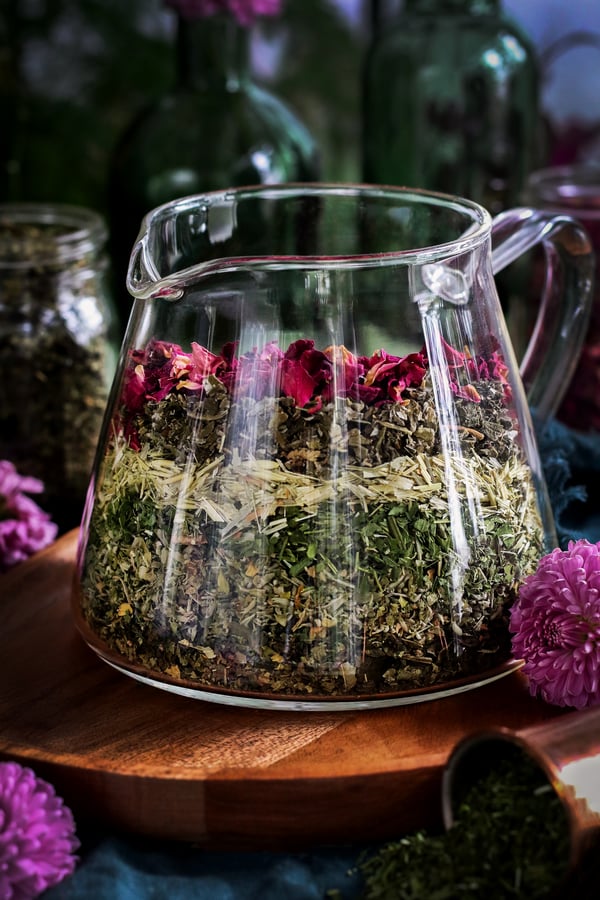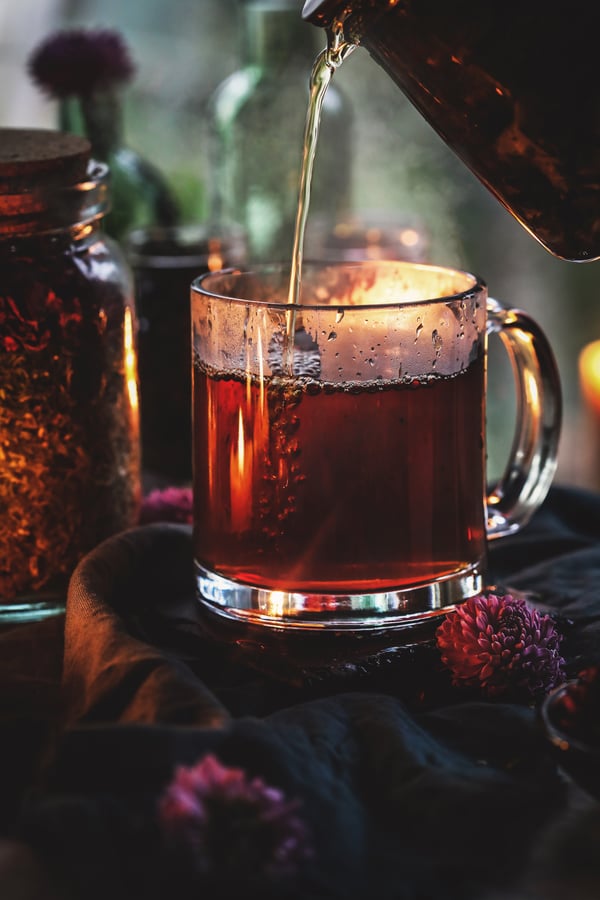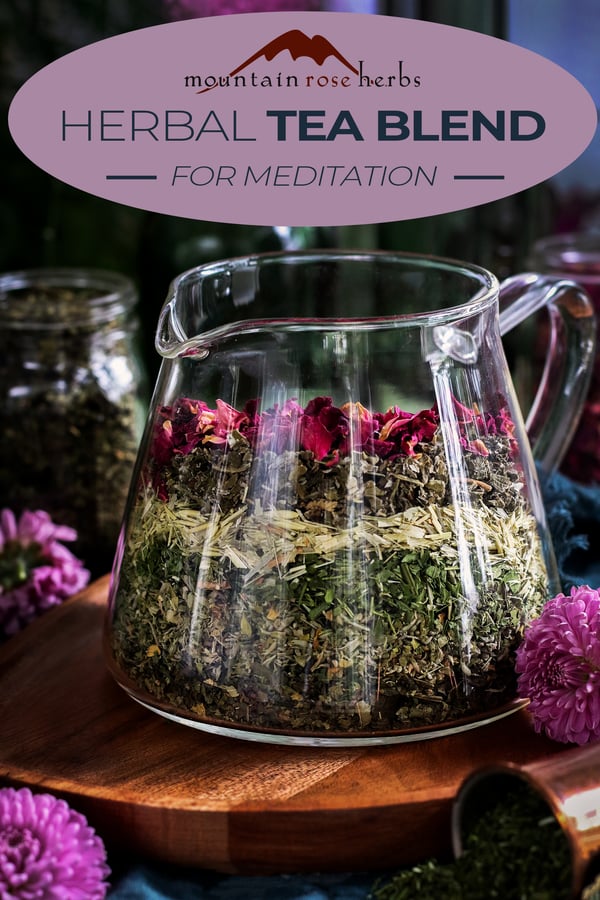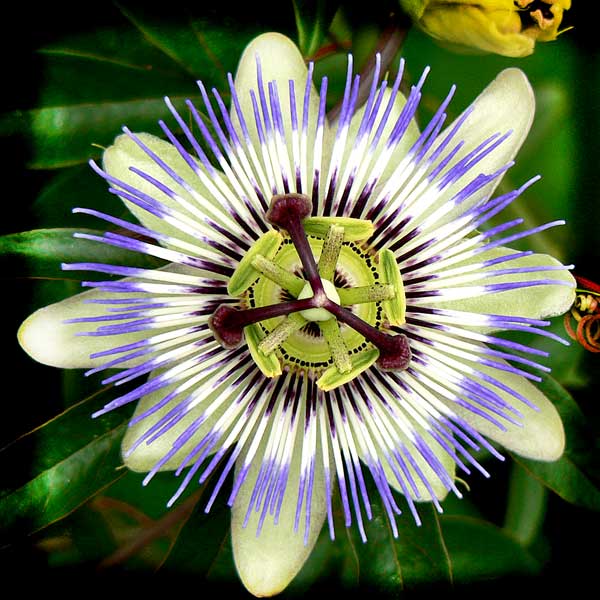I am not known for my ability to sit still. I am always moving, shaking, and thinking of all of the things that need to get done. This is the main reason that meditation has always been a bit of a struggle for me. I really enjoy it and see its vast benefits, but this act of slowing down does not come easily to me. So, I was delighted to discover that I could reach for some trusted herbal allies to help me slow down, break the cycle of an overactive mind, and sit still for longer than five minutes.
Not only does the act of brewing and sipping tea help to start the process of slowing down, but the herbs themselves begin to prepare my mind and body for the upcoming practice. The blend I am going to share here is made up of six ingredients that all play a special role in helping to quiet the mind, release tension in the body, and please the tastebuds at the same time.
In the Mountain Rose Herbs Tea Blending Guide blog, we share ways to create layers to yield a balanced and functional tea blend. With that in mind, I want to break down this tea so you can see the role the different components play in both the functionality and flavor of the tea. This will also help you to adjust the blend to fit your specific needs and flavor preferences.
Base Herbs: As the name implies, base ingredients offer a neutral but nourishing foundation for the tea blend. In this recipe, I called upon nettles and raspberry leaf, both of which contain key vitamins and minerals. I love offering these revitalizing herbs to my hard-working body in gratitude for all that it does.
Supporting Herbs: These ingredients in a tea blend are generally added for their function. I’ve added oatstraw and skullcap, which are nervines that help our bodies release tension and nervous energy. Skullcap is especially good for breaking through the circular thoughts that can be a hindrance to meditation.
Accent Herbs: The final building blocks of a tea blend are accent herbs. These are often used for taste, though they can also be functional. I added catnip for its subtle camphor note and because it has proven effective for helping me release my jaw tension and soften the shoulders. Lastly, I included rose petals for their delightful flavor and beauty, and their energetic connection to love. Although they are not a functional ingredient for relaxation, I enjoy adding this final touch to beautiful and balance the blend.
May you sip this blend in peace, joy, and contentment.
Meditation Tea Blend Recipe
Makes 8 ounces of tea.
Ingredients
- 1 teaspoon organic nettle leaf
- 1 teaspoon organic raspberry leaf
- 1 teaspoon organic oatstraw
- 1 teaspoon organic catnip leaf
- 1 teaspoon organic skullcap leaf
- 1 teaspoon organic rose petals
Directions
- Heat about 8-ounces of water until it reaches a gentle simmering.
- Add herbs to pot still well.
- Add lid and steep for 5-10 minutes.
- Strain out herbs and pour tea into your favorite mug.
- Sip slowly and meaningfully.
Pro Tips
- Since the ingredients are in equal parts, you can easily make a larger batch to have on hand.
- While this recipe was created to assist with meditation, it’s also great for breaking the cycle of circular thoughts any time.
Looking for more soothing herbal tea recipes?
Try This Calming Marshmallow Rose Tea Blend













